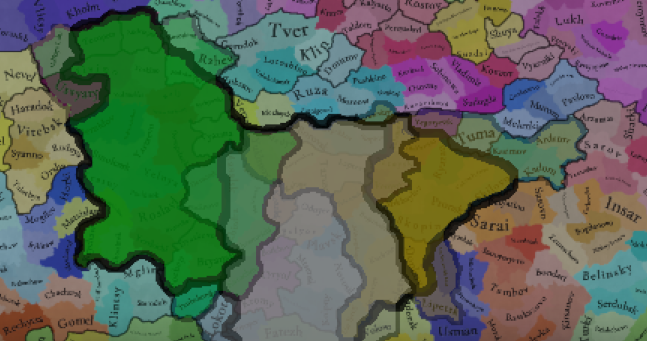The main source for the classification of Rus dialects are works of Soviet linguistics like Gorshkova and ZaliznyakI don’t think you can be so straightforward with Smolenskian specifically. Youre dealing with a dialect continuum where Smolenskian could realistically fall on either side (not too unlike the situation with Francoprovencal for example…), and putting it in Ruthenian just because Lithuania went on to control Smolensk doesn’t make sense on its own because it’s a political development that isn’t guaranteed to happen in 1337.
I think Smolenskian should probably be Ruthenian, but I’d like to see texts from the time period in Smolenskian, with Muscovite Russian, Polotskian, and some variety of what would go on to become Ukrainian to compare it to before I can say anything definitive.
They present the next dialect clusters:
- Pskovian-Novgorodian dialect
- Rostovian-Suzdalian dialect (Moscovite in EU terms)
- Smolenskian-Polotskian dialect
- Chernihiv-Severian dialects and Ryazanian dialects (can be grouped together as Severian)
- Halych-Volhynian dialect
- Kyivan dialect (sometimes grouped with Halych-Volhynian)
With the written system, the Ruthenian and Russian split is mainly based on the fact that they had different written dialects, one under Lithuanian duchy and other under Russian principalities
Last edited:
- 2
- 1
- 1









